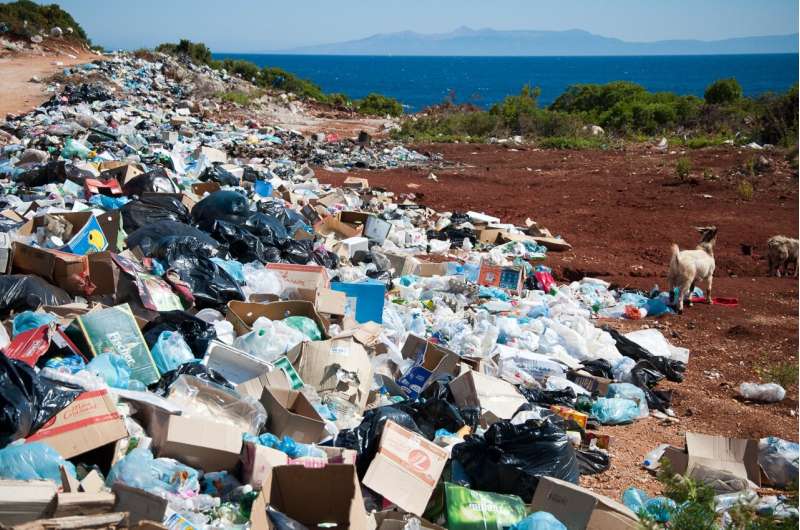
Credit: Unsplash/CC0 Public Domain
Microbial communities growing on plastic debris in rivers may have the capacity to harbor potentially pathogenic microbes and act as reservoirs of antimicrobial resistance genes, according to a study published in Microbiome. The findings also highlight differences in the potential pathogens and antimicrobial resistance genes that new and degraded plastics may have the capacity to harbor.
Vinko Zadjelovic, Elizabeth Wellington, Joseph Christie-Oleza and colleagues characterized the microbial communities found on the surface of low-density polyethylene plastic films after they were submerged in the River Sowe, UK, one kilometer downstream from a wastewater treatment plant for seven days in February 2020.
Half of the plastic samples were new and half had been heated in an oven for six months to mimic the degradation or weathering of plastic that often occurs in the environment. The researchers then compared them with microbial communities found on a control surface (wood sticks) that had been submerged in the same river for seven days and with microorganisms extracted from river water samples.
The authors found that plastic, wood and water samples all harbored potentially pathogenic microbes but that the types of potential pathogens extracted from plastic and wood samples differed from those in river water samples.
Plastic and wood samples harbored the potential pathogens Pseudomonas aeruginosa, Acinetobacter and Aeromonas—bacteria known as “opportunistic” that pose a greater risk to individuals with compromised immune systems—while water samples contained the potential human pathogens Escherichia, Salmonella, Klebsiella, and Streptococcus.
Similarly, the authors found that although antimicrobial resistance genes were present within microorganisms extracted from all samples, the types of antimicrobials to which these genes conferred resistance differed between those from plastic and wood samples, and those from water samples.
When the authors compared the microbial communities growing on new and degraded plastics, they found that P. aeruginosa (which can cause infections in hospital patients) was particularly abundant on degraded plastic samples. They speculate that this could be due to degraded plastics releasing larger amounts of organic compounds that encourage microbial growth than new plastics.
They also found that the relative abundance of antimicrobial resistance genes present in microbial communities was higher among those from degraded plastic samples than among those from new plastic samples; however, they note that the reasons for this are unclear.
The authors suggest that further research is needed to investigate the potential risks that plastic pollution with the capacity to harbor potentially pathogenic microbes and antimicrobial resistance genes could pose to human health, and to investigate the spread of antimicrobial resistance genes in the environment.
More information:
Vinko Zadjelovic, Microbial hitchhikers harbouring antimicrobial‑resistance genes in the riverine plastisphere, Microbiome (2023). DOI: 10.1186/s40168-023-01662-3. www.biomedcentral.com/articles … 6/s40168-023-01662-3
Citation:
River plastics may harbor potential pathogens and antimicrobial resistance genes (2023, October 31)
retrieved 31 October 2023
from https://phys.org/news/2023-10-river-plastics-harbor-potential-pathogens.html
This document is subject to copyright. Apart from any fair dealing for the purpose of private study or research, no
part may be reproduced without the written permission. The content is provided for information purposes only.
>>> Read full article>>>
Copyright for syndicated content belongs to the linked Source : Phys.org – https://phys.org/news/2023-10-river-plastics-harbor-potential-pathogens.html






























